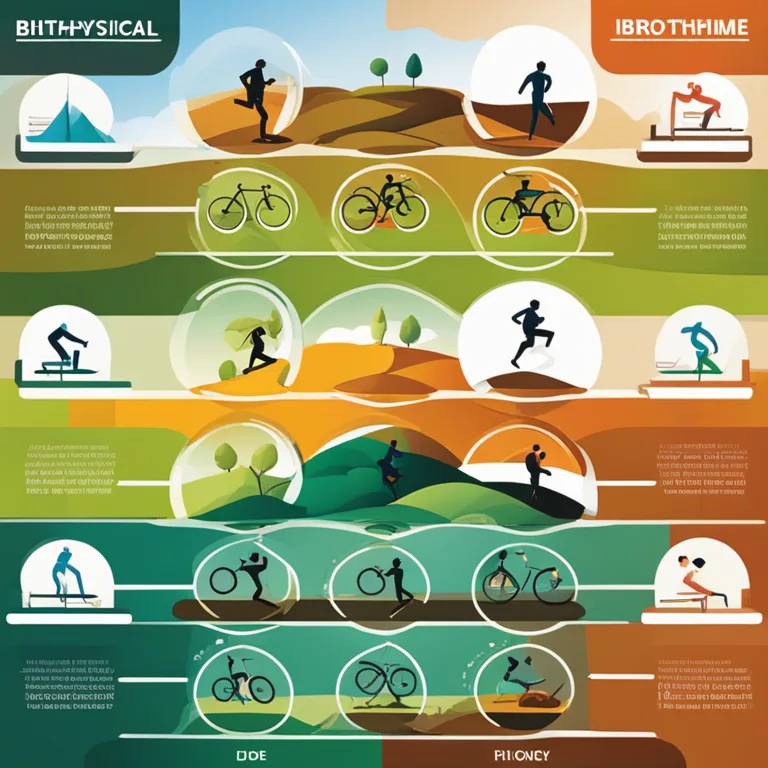
Biorhythms: How They Shape Your Life
Explore the practical applications of biorhythms in daily life, from personal wellness to performance optimization.
article by Adrian Wallace
Introduction to Biorhythms
Biorhythms are intrinsic cycles that are thought to regulate various physiological and emotional states. Originating from a scientific hypothesis dating back to the 19th century, biorhythms are said to impact one's physical, emotional, and intellectual faculties. Despite being regarded with skepticism by the scientific community, they have garnered a niche following. Individuals and practitioners often use biorhythm charts to predict and analyze personal energy levels and performance potential, aligning activities with these cycles for optimal outcomes.

Physical Cycle Insights
According to biorhythmic theory, the physical cycle spans 23 days and influences one's strength, stamina, and overall physical condition. Athletes, fitness enthusiasts, and individuals looking to maximize their physical health monitor this cycle closely. By planning workouts and rest periods in accordance with their physical high (peaking energy) and low (recuperation phase) phases, they believe they can enhance performance and reduce the likelihood of injury or strain.

Emotional Cycle Management
The emotional cycle, which repeats every 28 days, is associated with mood, creativity, and emotional stability. Recognizing points of emotional highs can be advantageous for activities requiring collaboration, emotional labor, or social interaction. Conversely, being aware of emotional lows may prompt one to avoid stressful situations, seek relaxation, or engage in activities that counteract mood dips, subsequently advocating for better mental health and relational dynamics.

Intellectual Cycle Application
Spanning a 33-day period, the intellectual cycle is believed to affect cognitive functions such as analysis, decision making, and logical reasoning. Timing intellectually demanding tasks during peak phases of this cycle is a strategy used by some professionals and students. They schedule critical thinking tasks, learning new skills, or problem-solving activities to coincide with high points in their intellectual biorhythm for potentially enhanced mental acuity.

Holistic Health and Biorhythms
The holistic health community often integrates the concept of biorhythms with other wellness practices to support an individual's overall well-being. By understanding and respecting these cycles, it is purported that one can improve sleep quality, nutritional timing, stress management, and even interpersonal relationships. Thus, acknowledging biorhythms might promote a more attuned and balanced approach to holistic health.
Biorhythms in Professional Planning
In professional environments, the knowledge of biorhythms could be harnessed to enhance productivity and employee well-being. Some organizations may consider biorhythmic data when scheduling team projects or critical negotiations, aiming for periods when collective intelligence and emotional states are at their peak. Although this practice is not widespread, it exemplifies the innovative ways in which biorhythms are sometimes used in the pursuit of optimizing work performance.
Biorhythm Software and Applications
With advances in technology, there are various software solutions and mobile applications designed to calculate and monitor biorhythms. These tools simplify plotting one's cycles, making it more accessible for daily use. Users can input their birth data and receive individualized reports and forecasts, enabling them to potentially plan their days and activities around their personalized biorhythmic calendar.
Published: 12/28/2023
Modified: 12/28/2023
More predictions
Come back here soon to learn more about yourself and your future


Biorhythms: The Science Behind
Delve into the scientific basis of biorhythms and discover how they influence our daily lives and wellbeing.


Biorhythm Horoscope: Syncing Life with Biological Cycles
Discover how biorhythm horoscopes align with your life's natural rhythms for personal insight and forecasting.


Biorhythms and Fortune: Maximizing Your Lucky Days
Discover how understanding your personal biorhythms can help you increase your chances of experiencing lucky moments and serendipity in day-to-day life.